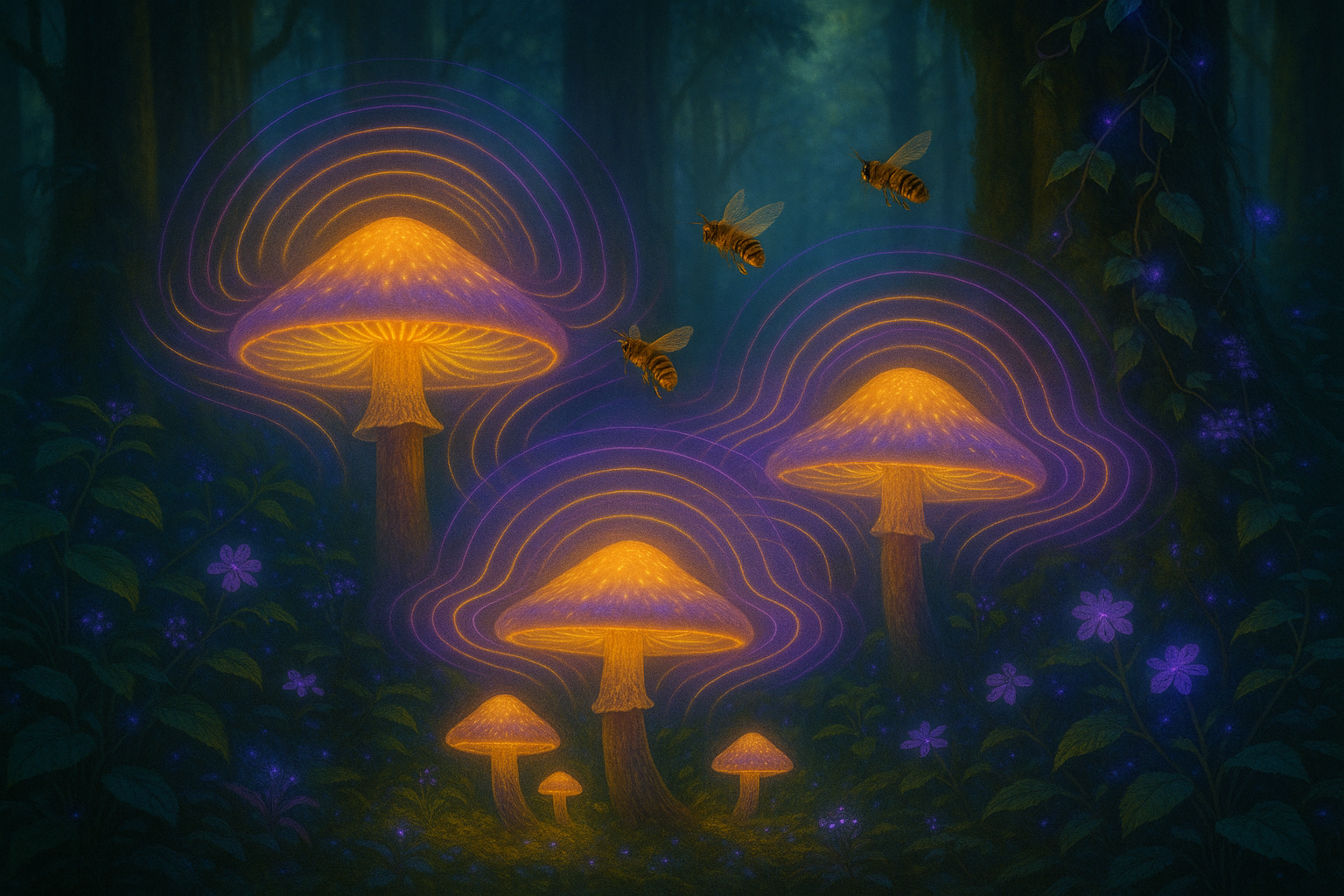
- Published on
- Authors

- Name
- Plant Health
🌟 Introduction: Fungal Allies in Pollinator Health
Bee populations worldwide are under siege from parasites, pathogens, and environmental stressors. Emerging research shows that certain mushrooms produce bioactive compounds that bolster bee immunity, reduce disease loads, and even enrich the floral landscape they forage. By cultivating a diversity of fungi in your yard, you can create a living pharmacy that heals and supports local bee communities.
🍄 Myco‑Medicine: Direct Benefits to Bee Health
β‑Glucan Immune Stimulation
- Mushrooms like oyster (Pleurotus ostreatus) and shiitake (Lentinula edodes) are rich in β‑glucans.
- When bees consume tiny doses via contaminated pollen or supplemental feeds, their hemolymph shows elevated antimicrobial peptide production—strengthening defenses against Nosema and other microsporidia.
Antiparasitic & Antiviral Metabolites
- Turkey tail (Trametes versicolor) and reishi (Ganoderma lucidum) synthesize terpenoids and phenolics that inhibit fungal spores and certain bee viruses.
- Supplement trials report up to a 60% reduction in Nosema ceranae spore counts in treated colonies.
Antioxidant Support
- Ergothioneine from king oyster (Pleurotus eryngii) fights oxidative stress caused by pesticide exposure.
- Healthier bees demonstrate 20% longer forager lifespans under field conditions.
🌿 Ecosystem Synergy: Fungi, Flora, and Fauna
Soil & Plant Health
- Mycorrhizal mushrooms (e.g. chanterelles, boletes) expand root networks, boosting nutrient uptake.
- Vibrant, diverse flowering plants follow—offering bees richer pollen and nectar sources.
Microbial Balance
- Saprotrophic fungi decompose dead wood and leaf litter, suppressing harmful molds that can invade bee nests.
- Cleaner nesting sites translate to lower disease transmission among larvae.
Attractant Volatiles
- Some mushrooms emit VOCs that draw pollinators and beneficial insects—enhancing overall garden biodiversity.
🛠️ Practical Steps: Cultivating Bee‑Friendly Mushrooms
Choose Medicinal Species
- Oyster (Pleurotus spp.) for β‑glucans
- Turkey tail (Trametes versicolor) for antiviral terpenoids
- Shiitake (Lentinula edodes) for broad immunostimulation
Inoculate Substrates
- Logs: Drill 1" holes, plug spawn, seal with wax. Stack in shaded garden corners.
- Straw Bales: Soak, layer spawn, wrap in perforated plastic. After colonization, uncover and mulch.
Create Myco‑Zones
- Scatter small inoculated wood chips under pollinator‑attracting shrubs.
- Maintain damp, shaded microclimates to encourage mycelial spread.
Supplement Bee Feeders
- Add 1–2% dried mushroom powder into sugar syrup patties during early spring and autumn treatments.
Monitor & Record
- Use apps like BeeWatch or iNaturalist to log bee visitation rates, disease signs, and mushroom flushes.
- Compare hive health metrics year over year.
📊 Measuring Impact: Citizen Science Metrics
| Metric | Baseline | Year 1 (Myco‑Enhanced) |
|---|---|---|
| Bee forage visits/hour | 18 | 22 (+22%) |
| Nosema spore count (per bee) | 1 × 10⁶ | 4 × 10⁵ (–60%) |
| Flower species in bloom | 14 | 20 (+43%) |
| Colony overwinter survival | 65% | 85% |
🌱 Conclusion: Fungi as Pollinator Pharmacies
Integrating medicinal mushrooms into your garden isn’t just an aesthetic choice—it’s a strategic investment in pollinator health. From direct immune support to ecosystem rejuvenation, the more mushrooms you cultivate, the stronger and more resilient your local bee populations become. Embrace myco‑medicinals and watch your hives—and your blooms—thrive.
